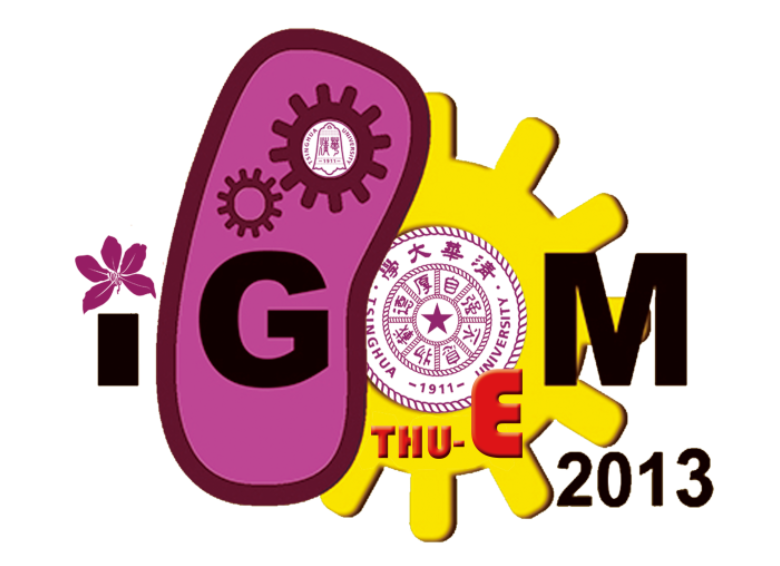Team:Tsinghua-E
From 2013.igem.org
| Line 14: | Line 14: | ||
{|align="justify" | {|align="justify" | ||
| - | | | + | | Welcome to meet us, a team from Tsinghua University including students majored in Chemical Engineering, Biology, Chemistry as well as Computer Science. |
| + | As we know, in terms of organisms, challenge as well as evolution is everywhere in order to survive. According to Natural Selection, there are three prerequisites to evolve --- heredity, mutation and pressure. | ||
| + | The major idea of our team is to simulate the process of evolution by involving e.coil groups producing tryptophan. | ||
|- | |- | ||
|[[Image:Tsinghua-E_team.png|200px|right|frame]] | |[[Image:Tsinghua-E_team.png|200px|right|frame]] | ||
| Line 22: | Line 24: | ||
|- | |- | ||
| | | | ||
| - | + | As our research object, e.coil’s propagation offers the possible condition of heredity.In order to accelerate as well as regulate its mutation frequency, we expect to introduceinto e.coi an Artificial mutation machinery --- mutD. | |
| + | As to surviving pressure, we have designed a gene circuit responding to the level of tryptophan. We knockout the original maltose hydrolysis gene (malQ) of e.coli and add a new malQ gene together with the mutD gene following a tryptophan sensor. Then we transfer the plasmid to the previous e.coli JW3379. Thus, the higher the level of tryptophan turns, the more maltose hydrolysis gene will be transcribed and the less mutD gene. In the simulation of evolution, we culture the e. coli in the M9 media containing maltose as the only carbon source, and provide a tryptophan doze at the beginning of the cultivation and gradually reduce the level of tryptophan in the media. Providing all the treatment mentioned above, we expect that only the mutation producing high level of tryptophan will produce enough maltose to survive the media. When tryptophan reaches a critical level, the expression of mutD will be totally depressed and mutation ceases, leaving the evolved as well as the desired e.coli in the media. | ||
| + | Thanks for Natural Selection, we believe that the method of simulation of evolution used in our project will become a global approach to produce any desired chemicals using e.coli in the near future! | ||
|- | |- | ||
Revision as of 13:35, 8 August 2013
| Home | Team | Official Team Profile | Project | Parts Submitted to the Registry | Modeling | Notebook | Safety | Attributions |
|---|
| Welcome to meet us, a team from Tsinghua University including students majored in Chemical Engineering, Biology, Chemistry as well as Computer Science.
As we know, in terms of organisms, challenge as well as evolution is everywhere in order to survive. According to Natural Selection, there are three prerequisites to evolve --- heredity, mutation and pressure. The major idea of our team is to simulate the process of evolution by involving e.coil groups producing tryptophan. | |
| Team Tsinghua-E | |
|
As our research object, e.coil’s propagation offers the possible condition of heredity.In order to accelerate as well as regulate its mutation frequency, we expect to introduceinto e.coi an Artificial mutation machinery --- mutD. As to surviving pressure, we have designed a gene circuit responding to the level of tryptophan. We knockout the original maltose hydrolysis gene (malQ) of e.coli and add a new malQ gene together with the mutD gene following a tryptophan sensor. Then we transfer the plasmid to the previous e.coli JW3379. Thus, the higher the level of tryptophan turns, the more maltose hydrolysis gene will be transcribed and the less mutD gene. In the simulation of evolution, we culture the e. coli in the M9 media containing maltose as the only carbon source, and provide a tryptophan doze at the beginning of the cultivation and gradually reduce the level of tryptophan in the media. Providing all the treatment mentioned above, we expect that only the mutation producing high level of tryptophan will produce enough maltose to survive the media. When tryptophan reaches a critical level, the expression of mutD will be totally depressed and mutation ceases, leaving the evolved as well as the desired e.coli in the media. Thanks for Natural Selection, we believe that the method of simulation of evolution used in our project will become a global approach to produce any desired chemicals using e.coli in the near future! |
 "
"
